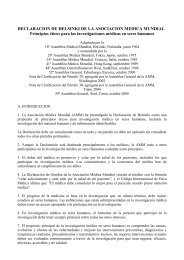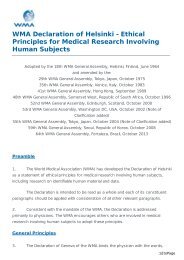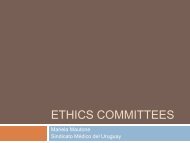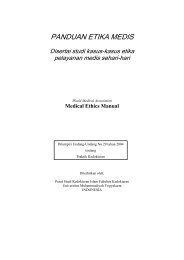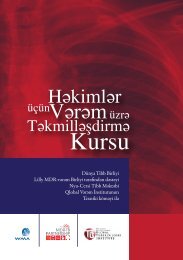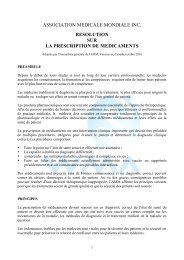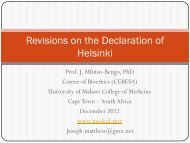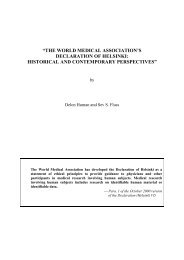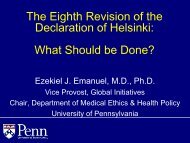WMJ 03 2010 - World Medical Association
WMJ 03 2010 - World Medical Association
WMJ 03 2010 - World Medical Association
- No tags were found...
Create successful ePaper yourself
Turn your PDF publications into a flip-book with our unique Google optimized e-Paper software.
<strong>Medical</strong> Ethics, Humam Rights, Socio-medical affairs and Environmental Policy<br />
Figure 1. Attendance to Consultant Out-Patient<br />
Clinics<br />
Figure 2. Attendance to General Out-Patient<br />
Clinics<br />
Figure 3. Attendance to Children’s Out-Patient<br />
Clinics<br />
Figure 4. Accident and Emergency Cases<br />
Figure 5. In-Patient Admissions<br />
Figure 6. Gross Clientele Turnover<br />
Figure 7. In-Patient Mortality<br />
Prior to 2005, the impression of our clients<br />
and their relatives was that prompt and optimal<br />
care was more likely to be obtained<br />
in private clinics in our locality than in the<br />
Teaching Hospital; and their reasons bothered<br />
mostly on the attitude of health personnel<br />
and non-availability of medications<br />
in government-run health facilities. The<br />
WHO had noted that people are increasingly<br />
impatient with the inability of health<br />
services to deliver levels of national coverage<br />
that meet stated demands and changing<br />
needs, and with their failure to provide<br />
services in ways that correspond to their<br />
expectations [4]. As a result, patronage of<br />
our government institutions remained very<br />
low and in most cases, was confined to those<br />
clients who could not afford the bills of private<br />
facilities, or victims of accidents whose<br />
identities and relatives were not known in<br />
the immediate post-ictal period.<br />
But, Nigeria was not alone in her inadequacies<br />
because studies by Halman, et al, Millenson<br />
and Davies, had shown that in many<br />
parts of the world, there were considerable<br />
scepticism about the way and the extent<br />
to which health authorities assume their<br />
responsibilities for health [17, 18, 19, 20].<br />
Surveys have shown a trend of diminishing<br />
trust in public institutions as guarantors<br />
of the equity, honesty and integrity of the<br />
health sector because on the whole, people<br />
expect their health authorities to work for<br />
the common good, do this well, and do so<br />
with foresight [21].<br />
The increased patronage noted after the<br />
introduction of SERVICOM appeared,<br />
therefore, to indicate a restoration of public<br />
confidence in the capacity of the hospital to<br />
provide desirable services. And this seemed<br />
to cut across the entire service points of our<br />
hospital. In the Operating Theatre, some of<br />
whose clients pass through the A&E Unit,<br />
figures rose by 32% (p



